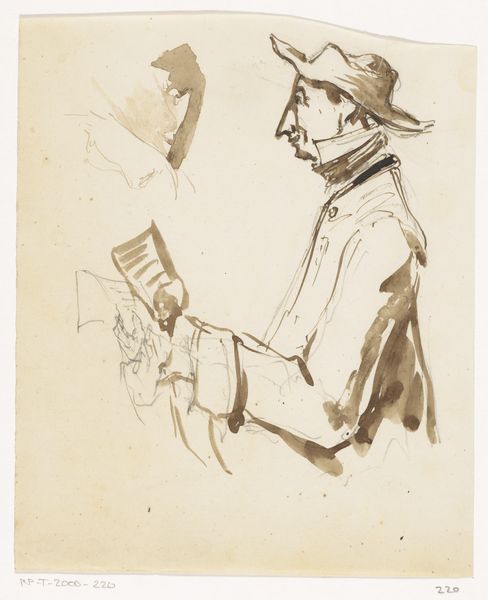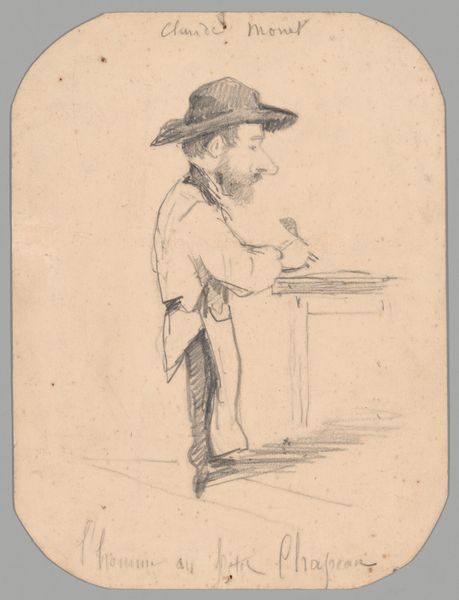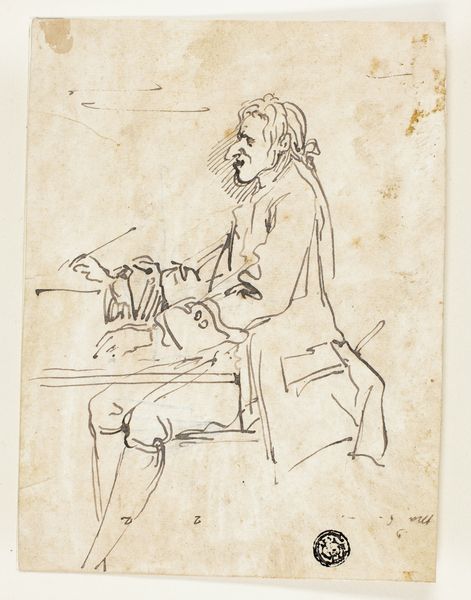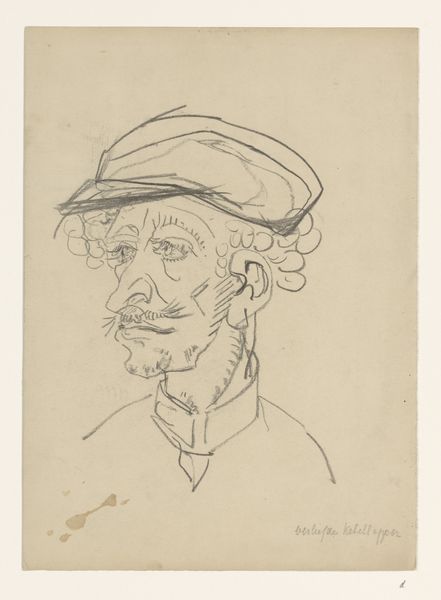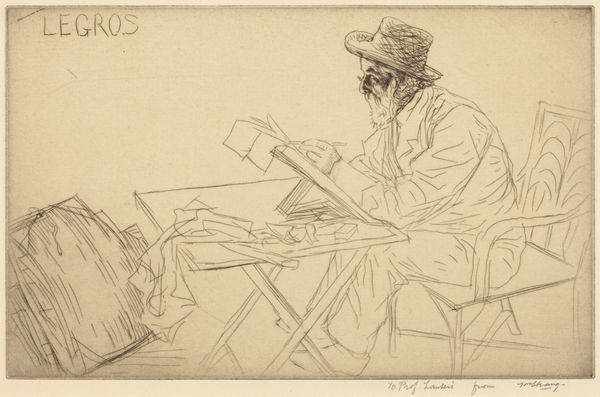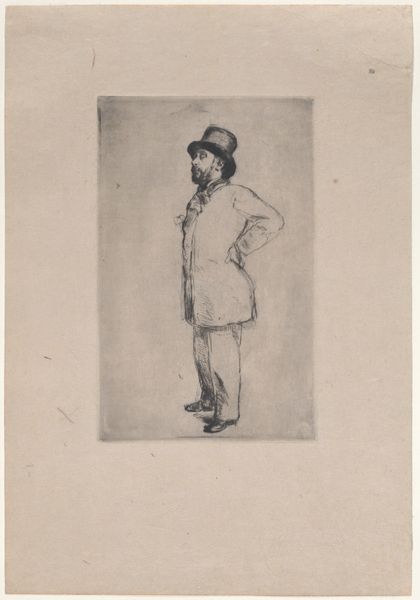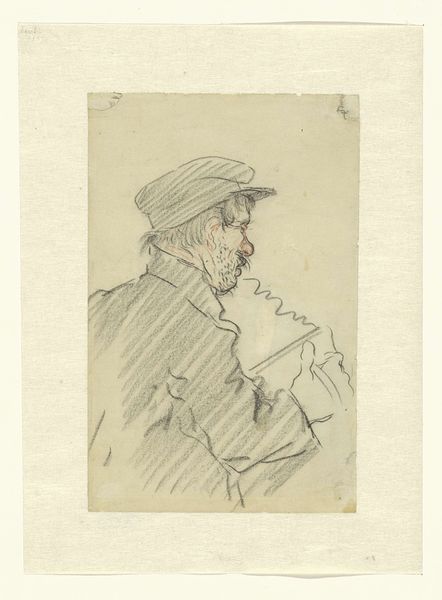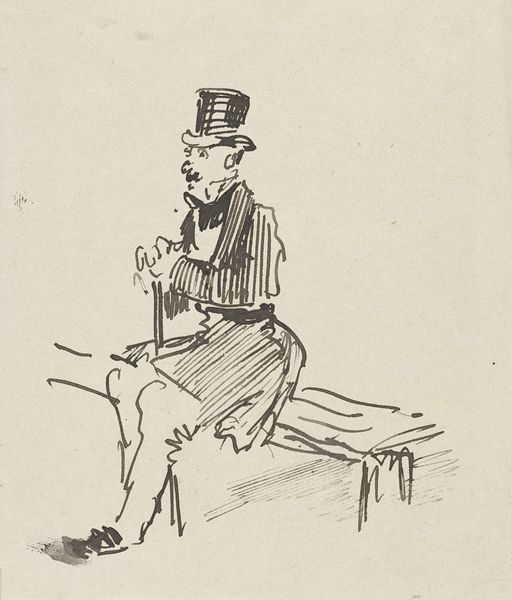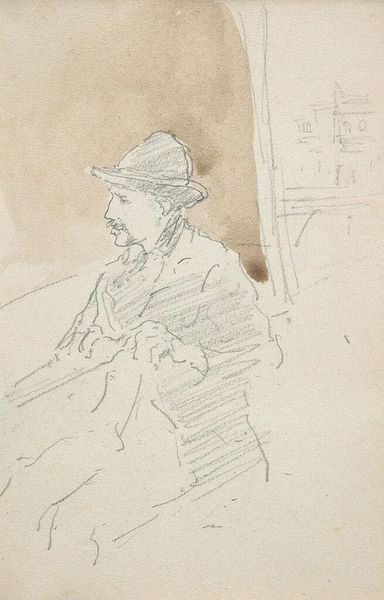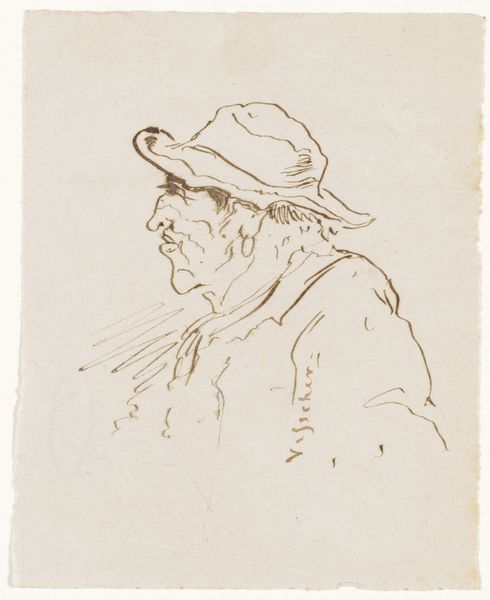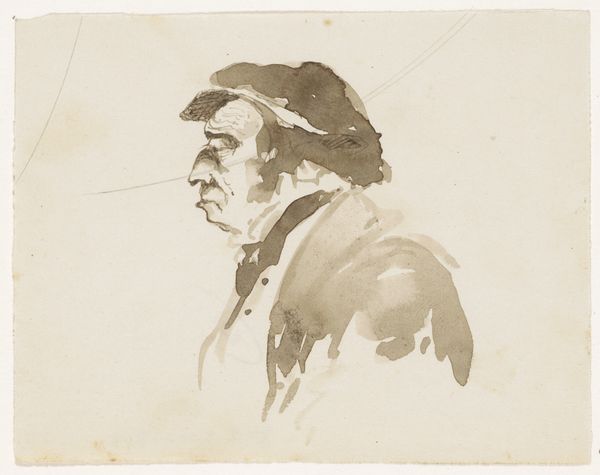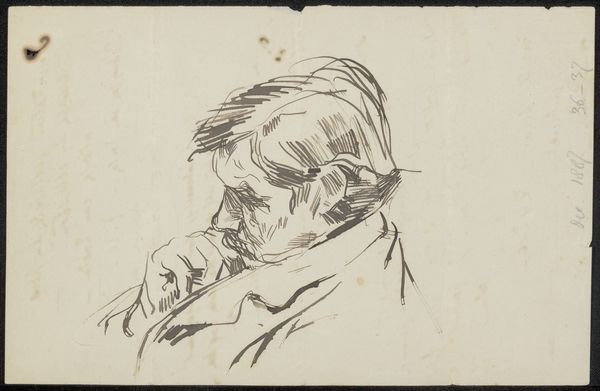
painting, watercolor
#
portrait
#
painting
#
impressionism
#
watercolor
#
watercolour illustration
#
genre-painting
#
modernism
Dimensions: 25 3/4 x 32 in. (65.4 x 81.3 cm)
Copyright: Public Domain
Editor: Here we have Édouard Manet's "George Moore (1852–1933) at the Café," created around 1879, a watercolor on canvas. There's a wonderfully intimate, almost voyeuristic quality to this genre painting of a man just sitting in a café. What draws your eye? Curator: What immediately strikes me is the seemingly casual nature of the piece. It's a candid snapshot, reflecting the rise of café society during the Impressionist movement and Modernism, when public spaces became theaters for observing modern life and conducting discussions. But how “candid” is it, really? Editor: That's a good point. So it's staging a sense of modern life? Curator: Exactly. Think about how Manet is depicting Moore, an intellectual and writer, within the social ecosystem of Paris. How might the setting, a café, influence the reception of Moore’s image and reputation? And what are the implications of showcasing it within a museum today? The portrait is not simply of Moore, but a commentary of Moore’s public role. Editor: That makes me wonder about who the audience was intended to be, back then. Did Manet mean to elevate or perhaps critique the "artistic" type through this piece, when these intellectual circles were new? Curator: That's a complex question! I see it more as representing the new economy around modern intellectualism. Who could afford leisure, who got depicted, and who had access to see it later in museums-- it all represents power dynamics in portraying "modern life". Editor: I didn’t consider the layers of power at play within what seems like a simple, casual piece. Thinking about it this way gives me so much more to consider. Curator: And hopefully, that encourages listeners to think about the role the museum plays in shaping what we understand to be "art."
Comments
No comments
Be the first to comment and join the conversation on the ultimate creative platform.
